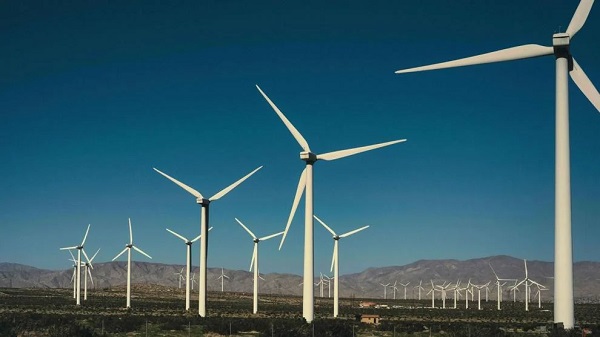Opinion
The Great Reset doesn’t care if you believe it exists and Canada is on the front line
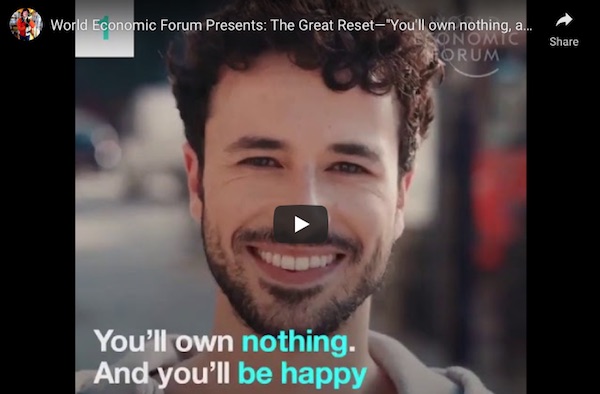
If you’re among the many people (can is possibly be the majority?) who still believe The Great Reset is an unfounded conspiracy theory, this article is for you.
The Great Reset ‘conspiracy theory’ has been around for years. If you don’t know what it is, here’s a brief explanation. It basically submits that some of the world’s wealthiest and most powerful people are using some of the world’s largest companies (which they own) as well as many of the world’s richest nations (which they run) to execute a plan to completely change the way our society works (which they don’t like very much). The theory is, these people who refer to themselves as “the elite” are planning to cripple the power of nation states and concentrate that power in a world governing body (like the World Economic Forum). This new powerful “elite” would exercise control over everyone, everywhere. They will completely change our supply chains, our economic systems and our energy systems in an effort to unite the world to protect the environment. There’s more to it, but that gets in most of the main points.
So this is the “theory”. But is there a “conspiracy” around this?
According the the Merriam-Webster Dictionary ‘conspiracy’ means simply “The act of conspiring together”. The Oxford dictionary spices that up a little. According to Oxford, ‘conspiracy’ means “A secret plan by a group of people to do something harmful or illegal”. Seems like it’s going to be easier to prove the Merriam-Webster version, but by the end of this article you’ll see how the Oxford definition might just work as well.
When it comes to all of the people who are not actively conspiring to change the world, there are roughly four categories of understanding The Great Reset. Either you:
- Have no idea there is a Great Reset
- Accept there is a Great Reset, but doubt the ability and the organization of the people conspiring.
- Accept there is a Great Reset, accept the ability of the conspirators, but either agree with their intentions, or at least not oppose their intentions due to your concern for a more fair economic system and an impending world devastating environmental disaster.
- Accept there is a Great Reset, and oppose the intentions of the conspirators because you personally value individual freedoms above everything else.
Group 1 is huge. Recent US polling shows half of Americans aren’t even aware of the Great Reset. It’s not like the people behind the reset aren’t writing and talking about it. It’s just that at least half of Americans haven’t seen them do it. That means we need to establish how it is possible in this age of information, that information of this magnitude is not being distributed to everyone. This part of my explanation is critical to understanding how very intelligent people can be completely unaware of information other people take for-granted.
It all comes down to this. We’ve all experienced the vast chasm of division and hatred in society of late. In this atmosphere of doubt and suspicion, there is really only one one thing in the entire world that absolutely everyone can believe in. President Donald Trump is a capital A a-hole. Even the “Don” would likely agree with that, right? But here’s the thing. When the rude TV star began his stunning run through the primaries, the world quickly divided between those who backed Trump and those who absolutely despised the orange tsunami.
How did this happen? Well a very large number of people, many of them living in ‘middle’ America had had it with the quality of the people running, to run America. When a second Clinton announced a Presidential bid they collectively shouted NOOOO. Then they set out in search of the exact opposite of the establishment. They found it in an orange sun rise of vitriol, emerging over the high rises of Manhattan. When Donald Trump threw his hair, ehem.. his hat into the ring, they had their guy. It wasn’t because of his experience, or that they believed he was ultimately qualified for the job. Trump’s crowning quality was the exact thing most people hate about him. You see it was that massive, bulbous, all encompassing ego that was the key. Only someone with an ego this out of control would be capable of resisting and even going on the attack against the oncoming onslaught of opposition from the embedded establishment and the mainstream media who despise him with a passion.
Trump will likely claim differently, but he didn’t invent divisiveness. The world was already moving in this direction. But like every huge event in history, it all starts with one bullet, one border crossing, and sometimes one very unusual Orange head of hair. Camps divided around Trump’s blinding ego. Guess which side the establishment was on? Guess which side the media was on? Guess what this would mean to the distribution of information?
Personally, when the orange glow emerged from Manhattan I tuned out. Not understanding what was happening, I dismissed the orange storm as a weather system that would fizzle out when people got sick of it. I tuned out of mainstream media because I only had so much time for the gong show that was (and remains) the media coverage of the orange blowhard. This is what saved me. I had to go looking elsewhere for information. I would soon find there was more information here, and different takes on the information everyone ‘knows’.
If you still depend on mainstream media you may not know or have time for an entire new world of information that has developed on the internet over the last few years. Comedians who used to turn to late night TV to analyze the daily news through humour (I understand they are still there), have turned to long form and as it turns out, extremely informing conversations in a series of compelling podcasts. They are joined by former media types and some pretty sharp up and coming minds. While their late night and daytime TV competition unite in their humorous hatred of all things Donald, these longer form conversations have tended to go deeper, due simply to the length of the presentation. Conversations often run past two and three hours, and “sound bites” are more like 5 to 15 or even 30 minute explanations of single issues. Yes it is wise to avoid a number of them, just like you would avoid a number of TV programs, but you dismiss many others at your own expense.
You don’t need to agree with them to find them compelling. They are talking about events, people, and issues (including The Great Reset) you will not even find on regular mainstream media. It is not uncommon for these podcaster / interviewers to be covering topics that my friends who rely on mainstream media won’t hear about for months, or even years. A great example of this is the Hunter Biden laptop. If you’ve been paying attention to this new online media, you’d have known about this since the fall of 2020. For those who rely on regular media, they only discovered the exact same information when it was finally confirmed by the New York Times in March of 2022. The fact they call this breaking news is hilarious (and disturbing) for those who read the original articles from the New York Post, about 20 months ago! Here’s a link to a retrospective look at Biden laptop news from The NY Post from December 2020!
Now on to The Great Reset. If you haven’t already clicked on the link in the fist sentence of this article here’s another opportunity.
OK now at least you know The Great Reset is a real thing. So we move on to people who find themselves in group 2 which doubts that the Reset will ever amount to any actual resetting. This group would say these ‘elites’ live really far away, and they’re probably harmless to us because it’s not like they have any control over us. Not in our country. Well. That all depends on how far away you live from people like Canada’s Deputy Prime Minister Chrystia Freeland. Canada’s Deputy PM is also on the Board of Trustees of the WEF. If that’s not a conflict of interest, they probably need to redefine conflict of interest. Don’t take it from me. Take it from the founder of the World Economic Forum Klaus Schwab. (You mean the Klaus Schwab who researched, wrote, and published the book COVID-19: The Great Reset, less than 6 months after Covid-19 was a thing?.. Yes. that’s the guy.) In this short video from way back in 2017 Schwab brags about the success of a WEF program called Young Global Leaders. In Schwab’s own words, the WEF has “penetrated” Canada’s federal cabinet. Sounds kind of conspiratorial.. and a little bit less like a theory when he says it.
If we want to know if this should be disturbing to us we need to know what Earth’s elites are planning for us. Well the WEF was kind enough to tell us exactly what The Great Reset will mean to.. well.. the rest of us. This (in)famous video reveals just how different life will be for the average person by 2030. It doesn’t say how “the elite” will live, though we can expect they’ll have slightly different rules. Alas, I’m getting ahead of myself. Here’s a list of the 8 things the WEF has been kind enough to let us know we need to prepare for by 2030. I understand this video originally came out in 2016. I first saw it in 2020. In five years it’s been circulated widely. Though it’s no longer featured on the WEF website, there are copies all over the internet.
Recap:
1) We’ll own nothing. Ouch. (Obviously the elite will own everything and since they’re smarter than us we’ll be very happy to know they’re taking care of us so well). It’s being said by opponents of this idea that people who own a bit of land are perhaps the greatest risk to this environmental movement. It’s bad for the environment for us to own property or even your own home. Especially because we decide what happens there. Do we keep animals? Do we cut down trees or burn around on recreation vehicles or inefficient farm machinery? All bad for the environment. All that will change.
2) The US will no longer be the world’s superpower. (Hmmm… Don’t these things often change after brutal wars?) Regardless instead of one superpower, there will be a few important nations. Wonder if that will make the world more secure, or less secure?
3) They plan to use 3D printers to make human organs (lucky for us).
4) We will not be allowed to eat meat very much anymore (cows and pigs and sheep are bad for the environment). Hey, speaking of conspiracies, I mean series of seemingly related facts that are probably just random.. Did you know Bill Gates is the largest private owner of ‘farmland’ in the United States? Not sure when the software magnate and WEF “Agenda Contributor” took up farming. I’m sure none of this is related to what Mr. Gates is going to allow us to eat in the future (nervous smile). Although Gates also happens to be a big investor in synthetic meat. Did I mention he’s an ‘agenda contributor’ with the WEF?
5) One billion people in the world will have to move due to climate change (Not sure if that applies to the beach homes of the elite). (Also not sure why scientists and engineers will stop doing what they’ve always done and help us cope and adapt if conditions are changing quickly and significantly.)
6) Polluters will have to pay to emit carbon dioxide. We already know how this feels in Canada.
7) We will be prepared to travel in space (I’m ready to go now). The logic here is that the earth will be so ruined by us, that we better be prepared to go destroy an entirely different planet. What could go wrong?
Finally and maybe most disturbing of all..
8) Western Values will have been tested to the breaking point. Some probably like the sound of that. But in the history books I’ve read, when a society’s values are tested “to the breaking point” that tends to look incredibly violent and warlike. (In my opinion number 8 is going to be really challenging to accomplish at the same time as the everybody will be happy part in number 1. Maybe that’s why they put them so far apart in their list.). By the way, you have to wonder what they mean by “western values”? Is this finally being enlightened enough to turf Christianity and those silly laws that western societies adopted from those traditional religious beliefs. Can’t wait to find out what the new traditions will be! This outta go over well (Imagine Jerry Seinfeld saying that.)
OK. If you don’t find this a tad disturbing that might mean you are personally in favour of The Great Reset. It’s still a free country so that’s just fine with the rest of us. However the introduction video above is very much prior to the official launch of The Great Reset. That took place in the opening months of the Covid-19 pandemic. It would be better to judge how this is actually going to work by looking at how this New World Order (that’s what they’re calling it now) is unfolding. Now that the resetters have been resetting for about two years, how’s it going so far? Here’s a report from Glenn Beck. Glenn is a conservative pundit and broadcaster. If you follow the mainstream media you will know him as a radical far right conservative (and maybe a lunatic). If you don’t see Beck through that filter you will acknowledge that he sometimes says very interesting things. Things like this. By the way, pay attention to the background behind the speakers at this “world government” conference. Then ask yourself if this group might be planning a new world order.
It’s puzzling that the Canadian media doesn’t give this any coverage. I guess there are simply more important things to talk about than whether our own federal cabinet is working in our interest or in the interests of really rich people who plan to OWN EVERYTHING in just a few short years. Oh this is probably nothing but you may have heard about the federal NDP party making a deal to secure the federal government right up to 2025. That party is lead by the guy who now is Co-Prime Minister Jagmeet Singh. Guess what?
Speaking of Canada. You may find this conversation between the British podcast sensation Russel Brand and Nick Corbishley interesting. Nick is the author of Scanned: Why Vaccine Passports and Digital IDs Will Mean the End of Privacy and Personal Freedom. As Canadians it is interesting to hear how people in other countries are seeing The Great Reset, and how Canadians are “world leaders”. Yippee?
If you’ve managed to find your way through the longest article ever, you will certainly now be able to acknowledge The Great Reset or New World Order exists. The question now is, do you believe this is a good thing or do you think we should resist it as things were working pretty well before they launched this? We can get into that later. At the very least the massive number of people who dismissed the “conspiracy theorists” as slightly insane will see there is a reason many people are concerned. In the end, as all philosophers know we need to establish the facts, before we can decide whether we agree with them or not.
Finally my wise friend Garett reminded about the joke that’s been circulating for many months now on social media. Every time it turns out another conspiracy theory was actually a conspiratorial fact, someone passes it around again. If you haven’t seen it yet it might help with your outlook in the future. Goes like this. “What is the difference between a conspiracy theory and the truth? — About 6 months!”
Censorship Industrial Complex
Hurting someone’s feelings could be punishable under Canadian hate crime bill: legal expert

From LifeSiteNews
Justice Centre for Constitutional Freedoms president John Carpay said that Bill C-9 in effect seeks to make it the law to ‘punish the emotion of hate.’
One of Canada’s leading constitutional law experts blasted a new Liberal “hate crime” bill as something that would “empower police” and the government to go after those it deems have violated a person’s “feelings” in a “hateful” way.
In a recent commentary piece posted by The Epoch Times, Canadian legal expert and lawyer John Carpay, founder and president of the Justice Centre for Constitutional Freedoms (JCCF), observed that the Liberals’ Bill C-9, or Combating Hate Act, is dangerous.
“Canada’s Criminal Code should punish bad behaviour, not bad feelings. Canadians need protection from crime, not from offensive opinions that might be considered ‘hateful’ by some but not by others,” Carpay wrote.
Carpay said that it seems the Liberals are “fixated on further criminalizing feelings of hatred that criminals may have had when carrying out their crimes.”
“Defining hate is near-impossible, as can be seen whenever politicians and judges attempt to do so,” he wrote.
Bill C-9 was brought forth in the House of Commons on September 19 by Justice Minister Sean Fraser.
The Liberals have boasted that the bill will make it a crime for people to block the entrance to, or intimidate people from attending, a church or other place of worship, a school, or a community center. The bill would also make it a crime to promote so-called hate symbols and would, in effect, ban the display of certain symbols such as the Nazi flag.
Bill C-9 reads, regarding what is deemed “hateful,” that “For greater certainty, the communication of a statement does not incite or promote hatred … solely because it discredits, humiliates, hurts or offends.”
Carpay said Bill C-9 “allows Canadians to express ‘disdain’ and ‘dislike’ without worrying about facing criminal charges, yet Canadians must be careful not to possess illegal emotions that involve ‘detestation’ or ‘vilification.’ It’s not ‘hate’ to discredit, humiliate, hurt, offend, and dislike people; it is “hate” to detest and vilify people. Are we clear?”
Carpay said that Bill C-9 in effect seeks to make it the law to “punish the emotion of hate,” noting how the reality is this “ignores” the reality that Canada’s judges are already “empowered to impose more severe penalties on hate-fueled criminals.”
The new bill increases the maximum penalty a judge can give to people convicted of crimes.
“If the judge decides that the convicted person’s emotions crossed from the legal territory of ‘disdain’ and ‘dislike’ into the crime of feeling ‘detestation’ or ‘vilification,’” Carpay noted.
This means that for a minor crime, where the maximum penalty is two years, a new “hate” crime offense could land someone in jail for up to five years.
“For the man convicted of a crime with a maximum penalty of five years in jail, if the judge determines that he possessed ‘hate’ in his heart, the judge can lock him up for 10 years instead of five,” Carpay stated.
“For more serious crimes, where the maximum penalty is 14 or more years in jail, if the judge thinks the convicted person was ‘hateful,’ the sentence can be imprisonment for life.”
The Liberals’ Bill C-9 has been blasted by the Canadian Conservative Party as a “dangerous” piece of legislation.
Conservative MP Leslyn Lewis warned it will open the door for authorities to possibly prosecute Canadians’ speech deemed “hateful.”
Carpay: Bill would ‘empower’ police, government
As it stands, Section 319(6) of Canada’s Criminal Code mandates consent of the nation’s attorney general before a person can be charged with a hate crime. Lewis and Carpay warned that Bill C-9 will eliminate this protection.
“Bill C-9 makes existing laws worse by empowering police to use the Criminal Code to impose their own subjective beliefs about what a police officer personally feels is ‘hateful.’ The bill does this by repealing an important safeguard that protects the free speech of all Canadians, namely the requirement that the attorney general consent to any prosecution for hate speech offences,” Carpay said.
He observed that the attorney general consent “safeguard,” as is the case now, has allowed hate speech prosecutions to proceed, “but only after a review by a higher authority.”
Fraser himself said that “by removing this step, law enforcement would be able to act quickly.”
Carpay noted how the bills promise to make it a “crime” to intimidate a church or place of worship, which is “not true.”
“It is already a crime to utter threats, intentionally provoke a state of fear in people, engage in physical contact (even in a minor way), and physically obstruct people from going about their business,” he wrote.
“Bill C-9 creates a duplicative and superfluous criminal offence of impeding access to a house of worship by intentionally provoking a state of fear; this conduct is already criminal under existing laws. By creating a redundant new law, Bill C-9 appears to be an exercise in virtue-signaling.”
Carpay also lamented how the bill mentions “rising antisemitism” but says nothing about the arson attacks on Catholic and Christian churches plaguing Canada.
“Anti-Catholic hate is obviously not on the minister’s radar. If it was, he would have mentioned it when introducing the Combatting Hate Act,” Carpay wrote.
“It goes to show how Bill C-9 is primarily about politics and appearances, even while undermining free expression in Canada.”
Since taking power in 2015, the Liberal government has brought forth many new bills that, in effect, censor internet content as well as go after people’s ability to speak their minds.
Business
PM Carney’s Astounding Conflicts Are Clearly Exposed. What Will Parliament, The Media, And Voters Do About It?
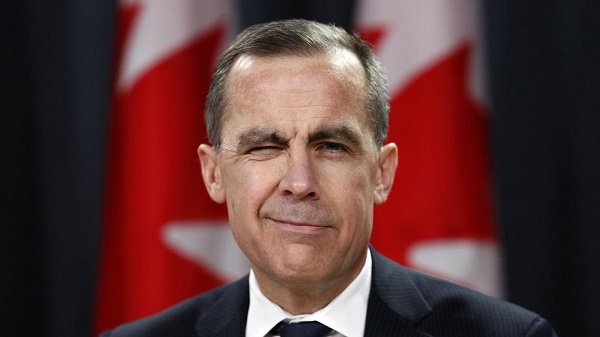
Will opposition parties force an election? Will the media demand Carney account for his conflicts? Will voters continue to allow Carney and Brookfield to profit from Carney’s leadership as they condemn the US President for doing the same?
NEWS ALERT!!!! https://t.co/HrhXGCyfPq
— Andrew Scheer (@AndrewScheer) October 1, 2025
From Conservative Party Communications
Conservative members of the Ethics Committee released the following statement on its ongoing investigation into Prime Minister Mark Carney’s conflicts of interest:
“Yesterday, the Ethics Committee heard scathing testimony from Canada’s leading ethics and accountability experts on the façade that is Mark Carney’s so-called blind trust – and his conflict of interest screen which is nothing more than a smokescreen.
“Leading ethics and conflict of interest experts told MPs that these measures are entirely insufficient, and that Prime Minister Carney stands to make millions from his investments while keeping them largely hidden from Canadians. The breadth of Carney’s conflicts and potential to benefit financially are entirely unprecedented in federal Canadian politics.
“Carney was involved in structuring Brookfield’s Global Transition Funds, from which he is set to receive carried interest payments potentially worth tens of millions of dollars. Carney knows exactly what assets are in these funds, but he has refused to disclose them. If the funds make money, he makes money – and the decisions he makes as Prime Minister will impact their value.
“Democracy Watch founder Duff Conacher testified that the Conflict of Interest Act allows Carney to ‘secretly profit’ from ‘secret investments’ – dismissing blind trusts as ‘not blind at all’ – and confirmed that Carney knows exactly what is in his blind trust. It is only the public that is blind to the full extent of the Prime Minister’s holdings.
“As currently written, the Act allows the Prime Minister to participate in ‘99% of the decisions’ that impact his private investments. Conacher considers the legislation a ‘sad joke’ – noting that ‘any time [Carney] is making a decision that affects businesses in Canada, he is in a financial conflict of interest.’
“As York University’s Dr. Ian Steadman told the Committee, blind trusts simply ‘aren’t enough’ to prevent public office holders from advancing their personal financial interests.
“Witnesses also slammed the Prime Minister’s conflict of interest screen. The screen is enforced by Carney’s top two aides who serve at his pleasure and are not independent. It lacks any transparency or oversight mechanism, which Conacher noted is a violation of the Act.
“The Ethics Commissioner has the power to strengthen the ethics screen and enforce full transparency today. He has failed to do so. This is deeply troubling, and must be addressed.
“These revelations are just the tip of the iceberg in an ongoing investigation. Conservatives will continue to expose Mark Carney’s unprecedented conflicts of interests and fight to close the loopholes in the Act that the Prime Minister is taking advantage of.”
-

 Alberta1 day ago
Alberta1 day agoWith no company willing to spearhead a new pipeline under federal restrictions, Alberta takes the lead
-
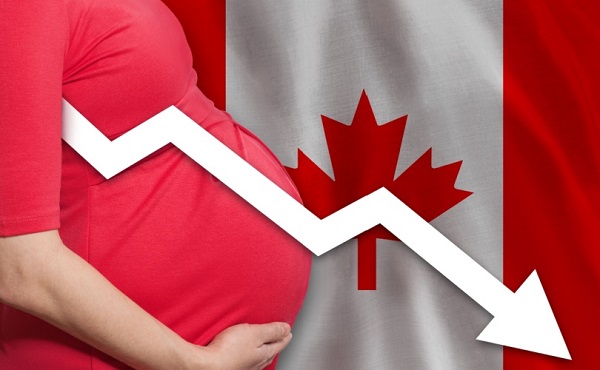
 National2 days ago
National2 days agoCanada’s birth rate plummets to an all-time low
-

 espionage2 days ago
espionage2 days agoNorth Americans are becoming numb to surveillance.
-

 Alberta1 day ago
Alberta1 day agoHalfway River First Nation makes history with Montney natural gas development deal
-
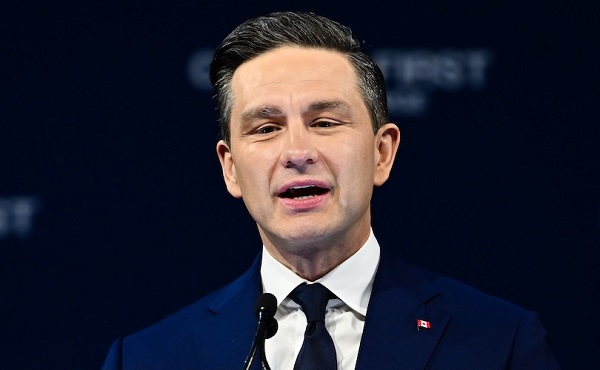
 Crime2 days ago
Crime2 days agoPierre Poilievre says Christians may be ‘number one’ target of hate violence in Canada
-
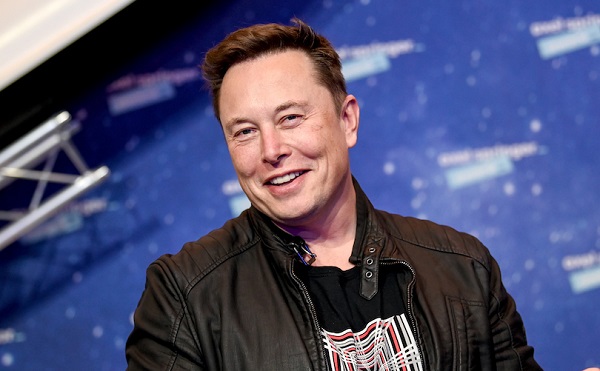
 Business1 day ago
Business1 day agoElon Musk announces ‘Grokipedia’ project after Tucker Carlson highlights Wikipedia bias
-

 Bruce Dowbiggin1 day ago
Bruce Dowbiggin1 day agoThe McDavid Dilemma: Edmonton Faces Another Big Mess
-

 Alberta1 day ago
Alberta1 day agoTaxpayers: Alberta must scrap its industrial carbon tax


